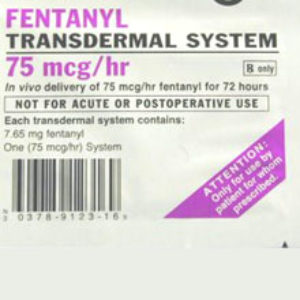Fentanyl is Deadly Ingredient In Fatal Heroin Overdoses

Heroin laced with the powerful narcotic fentanyl has been linked to more than 60 deaths in three states, and may have played a role in the death of actor Phillip Seymour Hoffman.
Police are investigating whether Hoffman’s overdose death on Sunday may have involved the use of heroin that was infused with fentanyl. The powerful combo has already been linked to deaths in Maryland, Michigan and Pennsylvania, and health officials have been attempting to raise awareness about the potential risk.
Fentanyl is a controlled substance used in many powerful pain medications, and it may be what is killing heroin users throughout the United States. Police and drug experts say that the fentanyl is 10 to 100 times more powerful than the heroin to which it is being added and 100 times more powerful than morphine. The drug is so strong that it is stopping users’ hearts.

Some drug dealers may be putting fentanyl in heroin to give it an extra kick and to make it more potent, but investigators say it has been too potent for at least 37 people in Maryland, 22 users in Pennsylvania, and at least four in Michigan. The investigation into Hoffman’s death is ongoing and testing so far has been inconclusive.
Law enforcement officials are warning addicts and users not to take heroin that they are hearing is particularly potent. They warn them not to think they are tough enough to take it and not to think that just taking a little will prevent an overdose.
Police do not know what the fentanyl-heroin mix is being called, though in previous years it has been referred to on the street as “China White.” It was linked to more than 1,000 overdoses from 2005 to 2007, according to the U.S. Centers for Disease Control and Prevention.
Fentanyl Health Risks
Fentanyl is an opioid usually administered intravenously or through the use of a fentanyl patch. It is an extremely powerful painkiller that has been linked to numerous overdose deaths in the past, particularly for users of the fentanyl patch, also known as the Duragesic pain patch.
The fentanyl patch was originally introduced as the brand name Duragesic pain patch, manufactured by a subsidiary of Johnson & Johnson. It is now widely available as a generic, and a number of drug companies make fentanyl pain patches, including Watson, ALZA and Mylan Pharmaceuticals.
The pain patch products contains powerful fentanyl gel, which is designed to be slowly delivered through the skin in a regulated manner. However, since it was introduced, the Duragesic patch and its generic equivalents has been plagued by a number of manufacturing problems, where some patches contained defects that allowed gel to leak out of the patch, posing a risk of fentanyl overdose.
Multiple fentanyl patch recalls have been issued by different manufacturers over the past decade, leading many critics to question whether the pain patch can be safely manufactured. If the fentanyl gel leaks out due to a manufacturing defect or is delivered through the skin at a faster rate than intended, it can cause potentially fatal overdose.
The FDA has also issued several safety warnings about risks associated with fentanyl patches. The FDA issued a drug safety communication in September 2013, reminding users that the fentanyl patch can remain deadly even after it is discarded, warning users and caregivers to exercise care with proper disposal.
Johnson & Johnson and the manufacturers of generic equivalents have faced a number of fentanyl patch lawsuits filed on behalf of individuals who have died or suffered catastrophic injury caused by fentanyl overdose.
A handful of Duragesic patch lawsuits against Johnson & Johnson and their Janssen Pharmaceuticals subsidiary have gone to trial and resulted in multi-million dollar damage awards. In addition, a number of settlements involving fentanyl patch overdoses have been reported.
Last year, the U.S. Judicial Panel on Multidistrict Litigation (JPML) ordered the consolidatation for all wrongful death lawsuits over Watson fentanyl patches, centralizing the litigation before U.S. District Judge Matthew F. Kennelly in the Northern District of Illinois. There are currently more than two dozen lawsuits that are being coordinated during pretrial proceedings as part of an MDL, or multi-district litigation.






0 Comments